The Android Automotive OS is about to disrupt the automotive infotainment market while releasing network effects for the different automotive OEMs. To evaluate whether a HMI concept transfer from the automotive domain to the eVTOL industry is feasible this paper sheds light on the transferability from technological, legal and business perspective. Based on these results a first HMI design concept for eVTOL aircrafts is presented.
Introduction
The automotive industry is undergoing a technological transition which will change the way we are perceiving and making use of modern automotive vehicles.
While in the last decade many OEMs have not been focusing enough on the users’ needs and expectations originating from the consumer electronics industry, Google is addressing this issue and about to revolutionize the automotive infotainment market. By launching the Android Automotive operating system (OS) Google offers a solid platform solution which currently is implemented by different automotive OEMs providing significant benefits such as an adaptable human-machine interface (HMI), shorter development cycles and resulting cost savings.
The emerging electric vertical take-off and landing (eVTOL) industry on the other hand is still in its infancy. eVTOL OEMs are in the aircraft prototype phase and striving to bring the perfect user experience (UX) to the pilot and passengers.
Considering the future, when it comes to autonomous driving and flying, the concept and setup of an automotive and airborne vehicle will be similar in many aspects. Additionally, users will expect in-vehicle connectivity and infotainment no matter the means of transportation. In total, this similarity between the vehicles and users’ needs raise the question whether the Android Automotive OS can also be implemented in the aviation industry on eVTOL aircrafts and leverage infotainment systems in this specific aviation industry.
State of the Art
Introduced in March 2017 by Google, the number of automotive OEMs which are considering an implementation of the Android Automotive OS is increasing constantly.
Being an Android based open source system its basic services are free of charge for the automotive OEMs. Only when the Google automotive services (GAS) such as Google maps are requested for implementation an one-time fee per vehicle applies. However, the OEM still has the possibility to develop for instance own navigation applications and can waive the fee-based services by Google.
As displayed in Figure 1 the platform approach of such an OS brings further benefits. Instead of developing an infotainment system from scratch OEMs can build up their own HMI layer according to their needs and modify provided services, frameworks and the hardware abstraction layer (HAL) if necessary. Hereby one has to take into consideration that the more of the basic layers is modified the more has to be maintained when a new OS update by Google is provided. Apart from the adaptable HMI the improved update management is a clear benefit in comparison to traditional infotainment systems. In addition to basic layers, frameworks and services which are regularly updated by Google, the OEM can provide new applications or app updates either via the Google Play Store or via their own app store. This all leads to shorter development cycles as basic layers will be reused and only slightly modified.
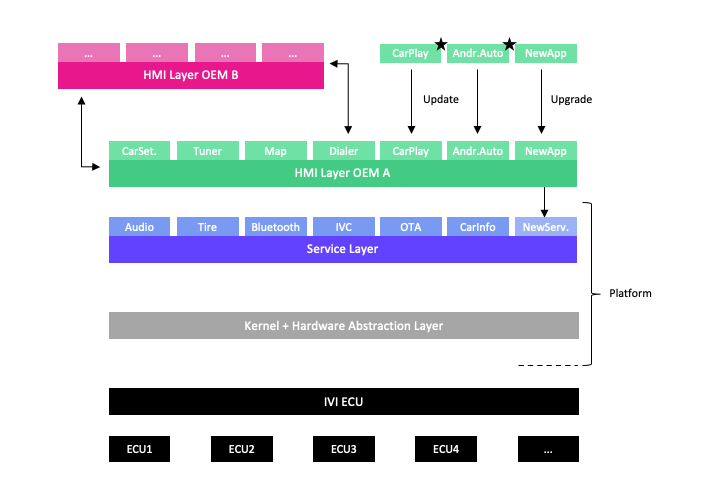
However, the implementation of the Android Automotive OS also has its limits. Being an Unix-like operating system it does not provide real time capability which is mandatory for highly safety-critical functions. As a consequence of this the Android Automotive OS can only be implemented for infotainment purposes and must not perform any vehicle control related tasks.
While the Android Automotive OS is implemented in the automotive industry and officially launched by different OEMs starting from 2020, eVTOL OEMs will launch their first aircraft operating services in the upcoming years. Due to this emergence and resulting infancy of this industry infotainment systems for this specific market are not yet available or provided – a platform-based operating system similar to Android Automotive potentially called Android Aviation could be beneficial.
HMI concept transfer
Targeting an enhanced user experience for the customers in the eVTOL domain an infotainment system cannot be neglected. Therefore, the option to transfer the Android Automotive OS to the eVTOL industry should be considered and its feasibility be assessed from technological, legal and business aspects.
From a technological perspective the safety and security of the vehicle, pilot and passenger must be in focus. Real time capability, robustness and redundancy play significant roles in aviation and affect to what extent the Android Automotive OS could be transferred. In general, highly safety-critical content must be displayed on the so-called primary flight display apart from infotainment content while the not safety-critical content could be displayed on an additional central screen in the eVTOL aircraft. In the automotive domain, safety-critical content is displayed in the cluster of a vehicle on basis of QNX which is real-time capable. Infotainment content is displayed on the central screen of the head unit on basis of Android Automotive. Taking these safety requirements and their similarities in both industries into consideration, the transfer of the Android Automotive OS becomes feasible. However, some functions which might have not been safety-critical in the automotive sector such as the display of the battery status and consumption may have to be reassessed in the eVTOL industry and monitored on the primary flight display. If this general separation is maintained and displayed functions are reevaluated according to the requirements of the aviation domain, a transfer of the Android Automotive OS focusing on infotainment content only will be possible.
From a legal perspective the safety and security of the vehicle, pilot and passenger are essential as well. In contrast to the automotive industry, certification processes in aviation are stricter. The Special Condition for Vertical Take-Off and Landing (SCVTOL) aircrafts recently published by European Aviation Safety Agency (EASA) in general or the DO-178C and ARP4754A for software certification in aviation are guidelines which should be taken into consideration when an infotainment system is developed or transferred and adapted from the Android Automotive OS. In any case, it must be secured that the pilot is not significantly distracted during operation to ensure their and the passengers’ well-being. If these guidelines as well as the previous mentioned separation of highly safety-critical content are maintained and the Android Automotive OS is adapted accordingly, a transfer of the OS will be feasible.
From a business perspective the users as well as their needs and expectations, influenced by other industries, play the most significant role. In a digitalized world people intend to stay connected, informed and entertained no matter the means and way of transportation. Even if in aviation some functions will differ from the automotive use case, there will be a need and thus market demand persuading eVTOL OEMs to implement an OS-based infotainment system such as the Android Automotive OS in the automotive industry. Android Aviation, for now just a theoretical construct for modern eVTOL aircrafts, thereby could meet this demand. Additionally, due to the open source platform approach and apart from shorter development cycles and lower implementation costs, new services can make their way into the cockpits. The integration of a seamless customer journey and electronic flight bag functionalities are just two of a sheer unlimited number of opportunities to unlock further business potential, based on an Android Aviation OS.
Summing up these three perspectives it becomes obvious that a transfer of the Android Automotive OS to the eVTOL industry is feasible, if certain guidelines and restrictions focusing on safety and security aspects are observed. The necessary implementation effort may will increase on the short run but as customers are anyway expecting a modern and highly innovative user experience inside the eVTOL aircrafts the implementation of an infotainment system is inevitably.
HMI design concept
Based on industry specific interviews requirements towards operating systems in the eVTOL domain have been elicited. In combination with the three previous mentioned perspectives the general transferability of the Android Automotive OS has been concluded and a HMI design concept realized. Thereby, the clear separation of highly safety critical and infotainment content has been taken into account.
Figure 2 gives a first impression on the HMI of the primary flight display of an eVTOL aircraft. Based on a real-time capable OS, this screen would display highly safety-critical content necessary for flight control.
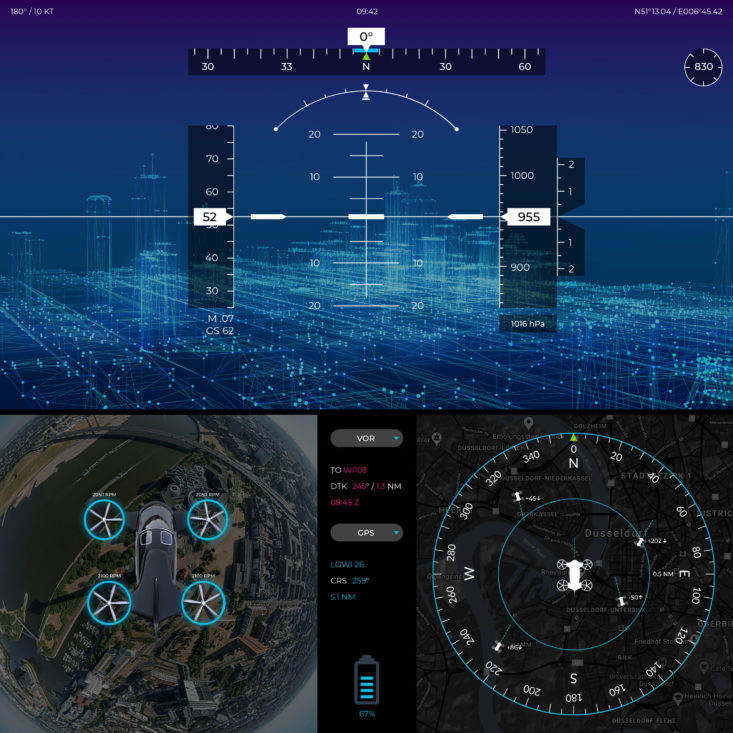
Figure 3 and Figure 4 on the other hand present the HMI of the central screen inside an eVTOL aircraft. Being implemented on basis of the theoretical Android Aviation OS this screen would display infotainment content as well as travel information for the passengers.
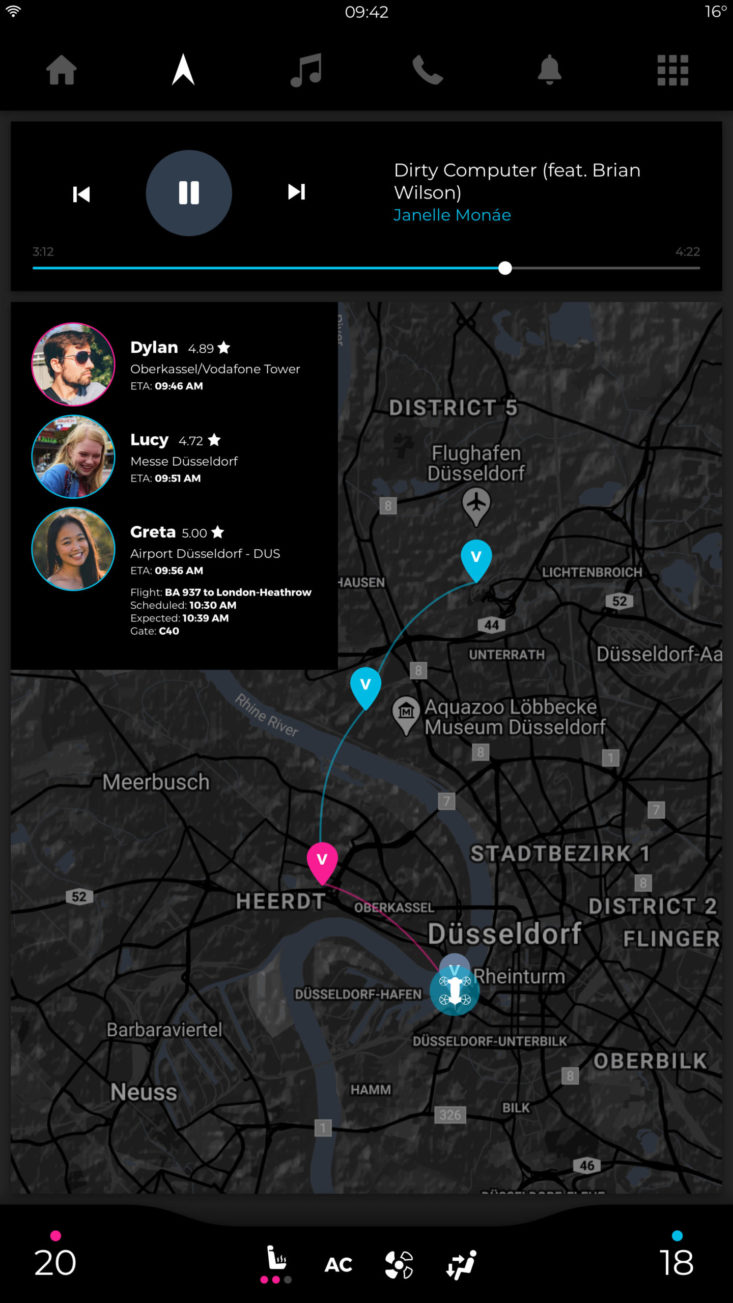
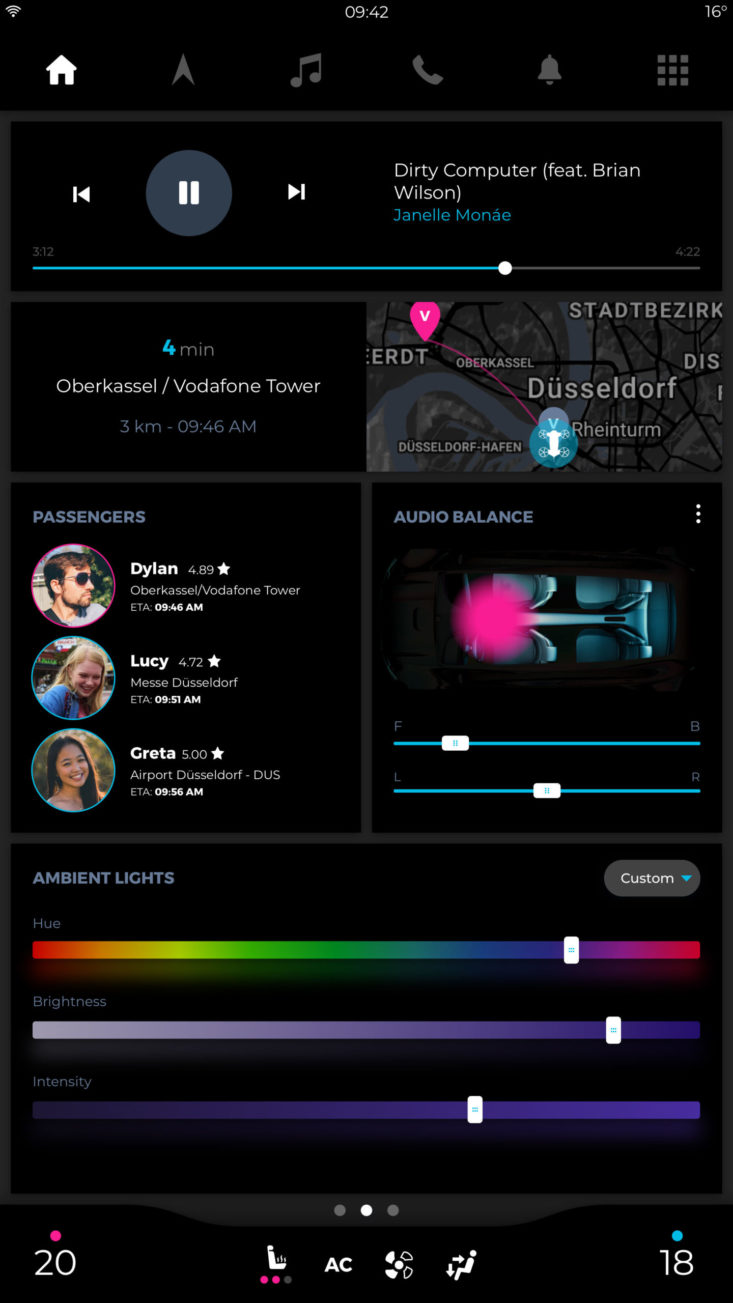
Finally, Figure 5 displays a mock-up of both displays – the primary flight display as well as the central display – arranged inside the cockpit of an eVTOL aircraft.
Obviously, this HMI design concept is just an example of how an OS-based infotainment system similar to the Android Automotive OS could look like. However, taking this potential draft of the Android Aviation OS as an inspiration, eVTOL OEMs should seize the opportunity and extend their idea of a glass cockpit in order to provide an outstanding user experience to their passengers right now. Being still in the development phase of their aircrafts an integration and implementation of a respective infotainment system at this point in time will consolidate their position in the future market once different eVTOL OEMs will be operating. Thus, it is recommendable to already now address this topic to fulfill the users’ needs and expectations towards such a futuristic vehicle and hence be prepared for the future of airborne transportation.
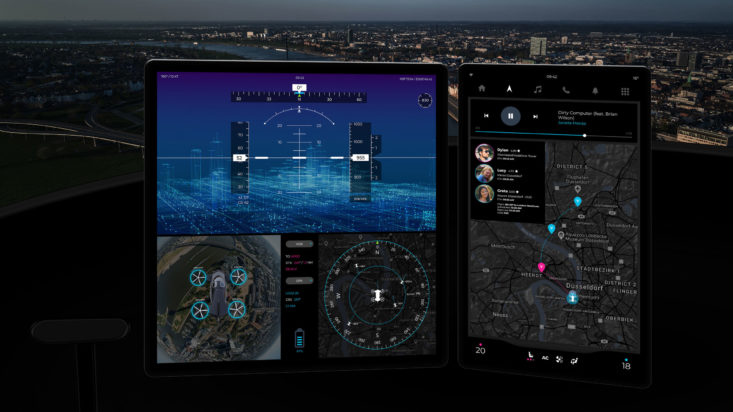
I would never in a million years trust Android for any instrumentation software in a plane.
HI Gerald,
same sentence was used 7 years ago regarding Google being in the instrument cluster. Of course a non RTOS system cannot be in a cluster, and meanwhile is exactly what is happening, AAOS is claiming beside the infotainment also the cluster, but based on a RTOS approach OS.
Marius